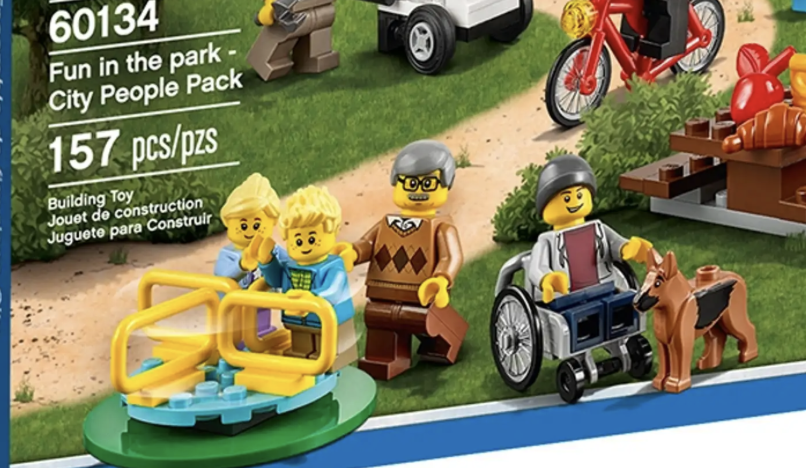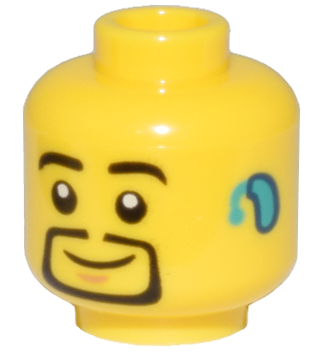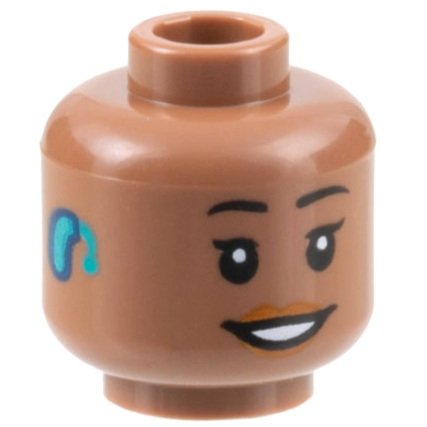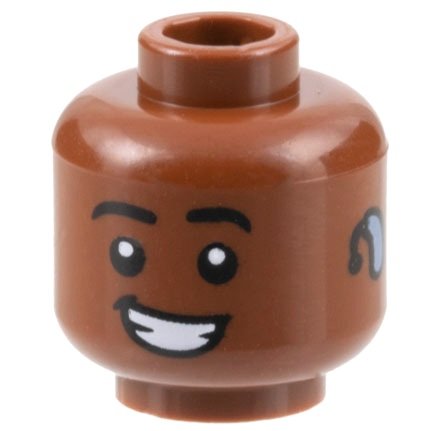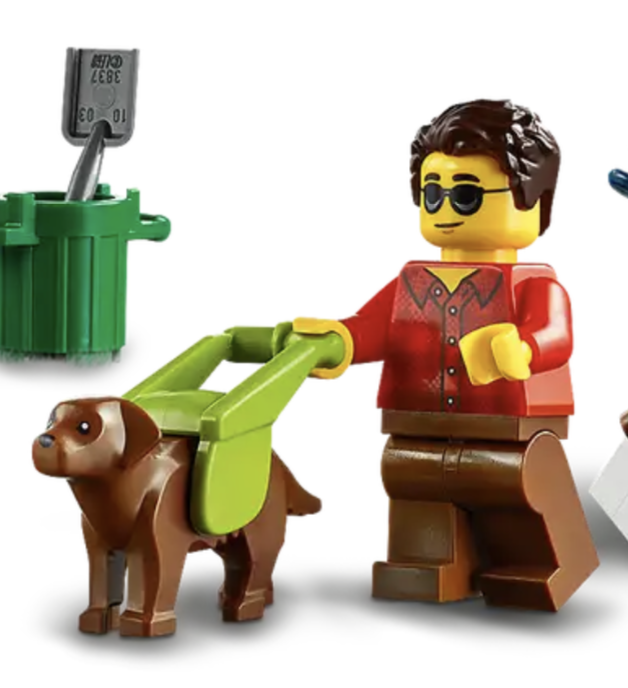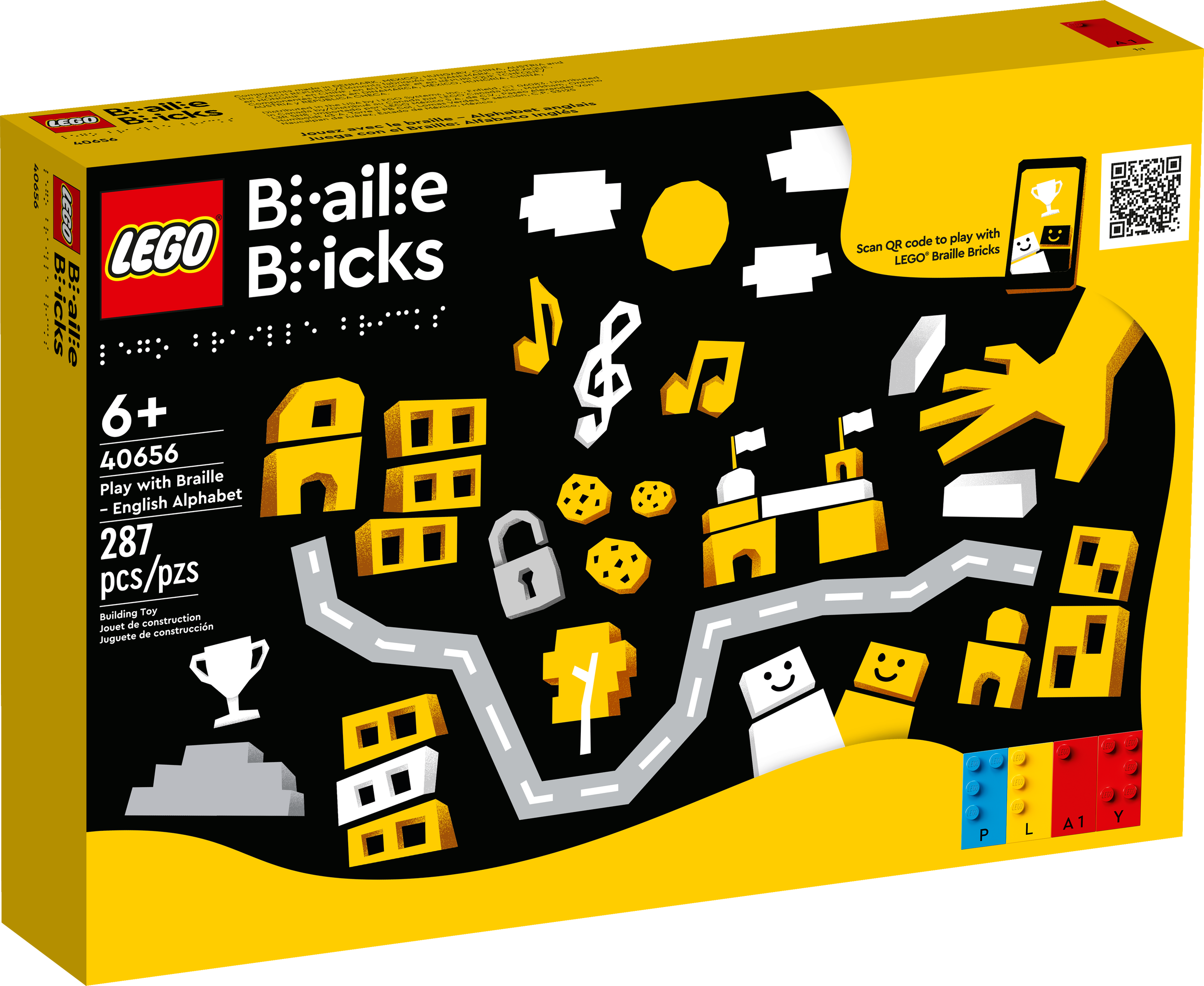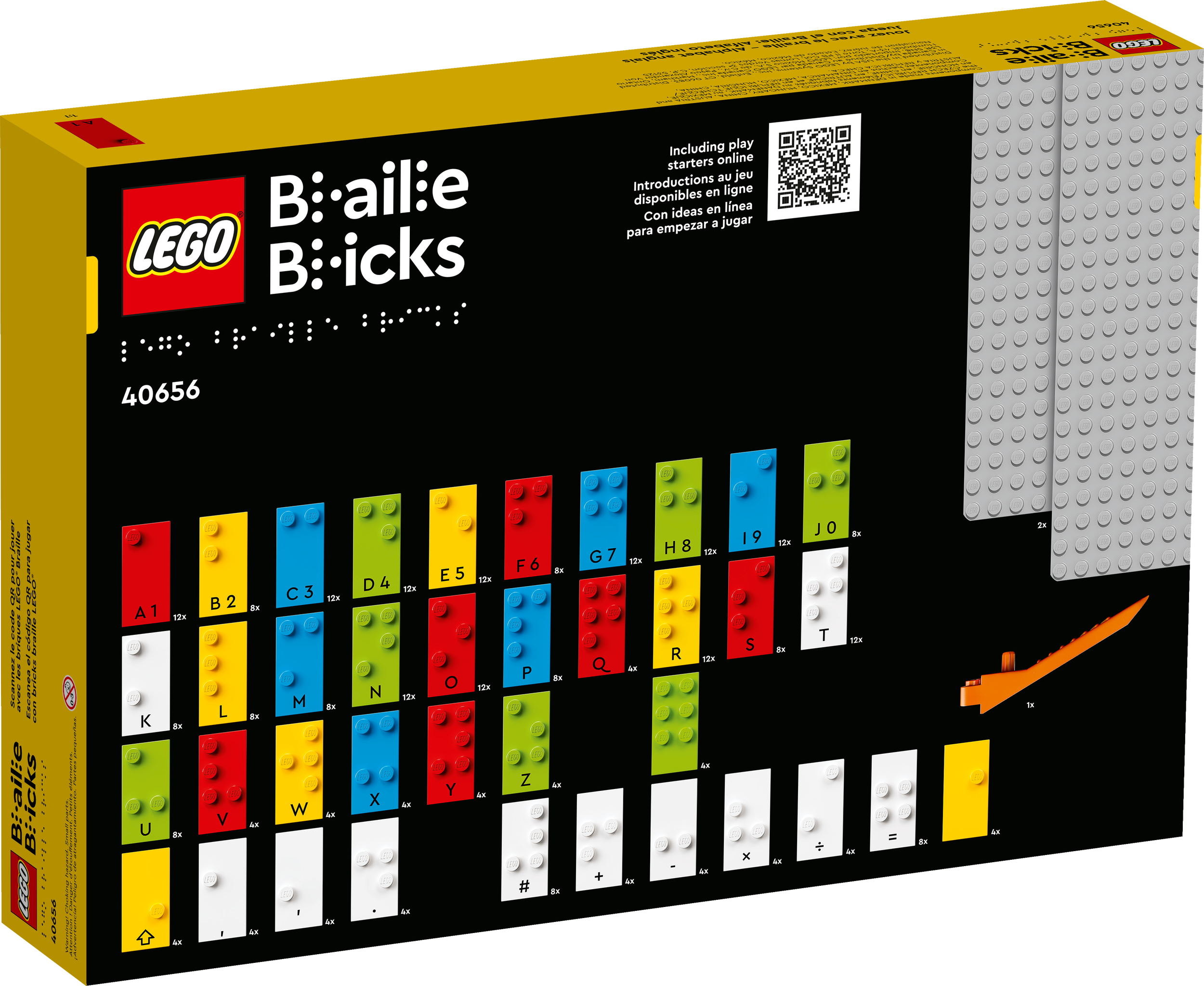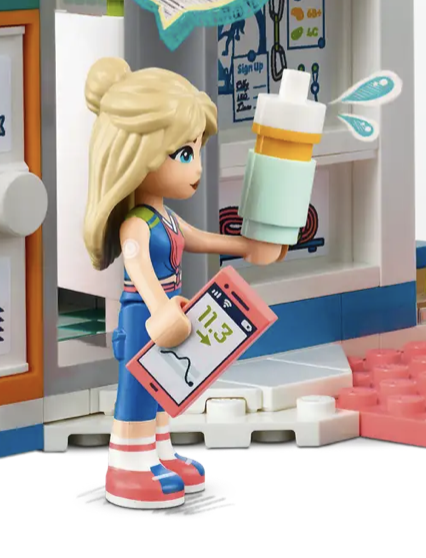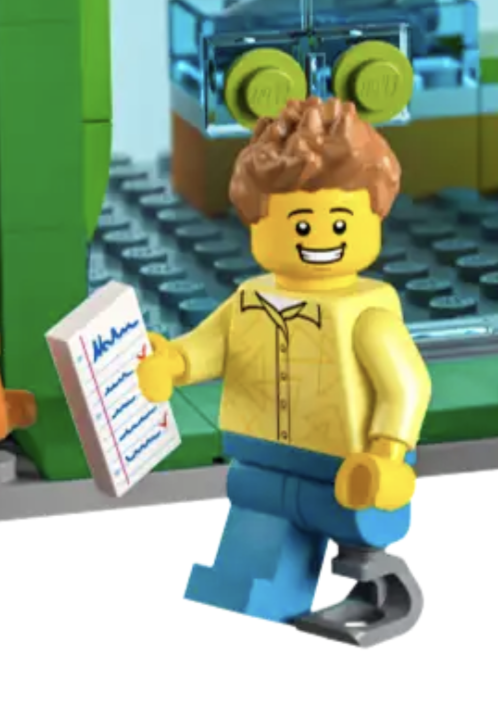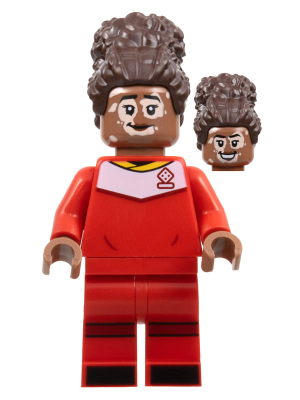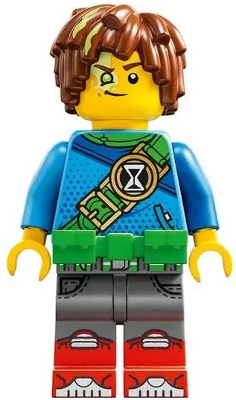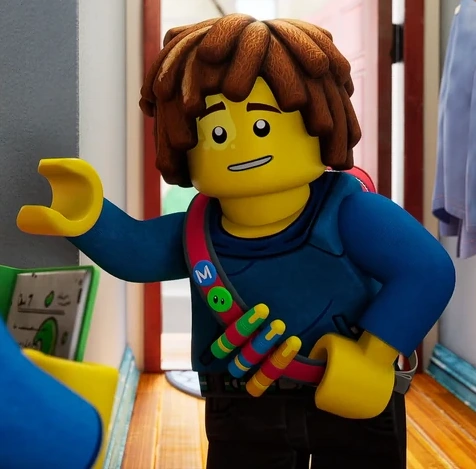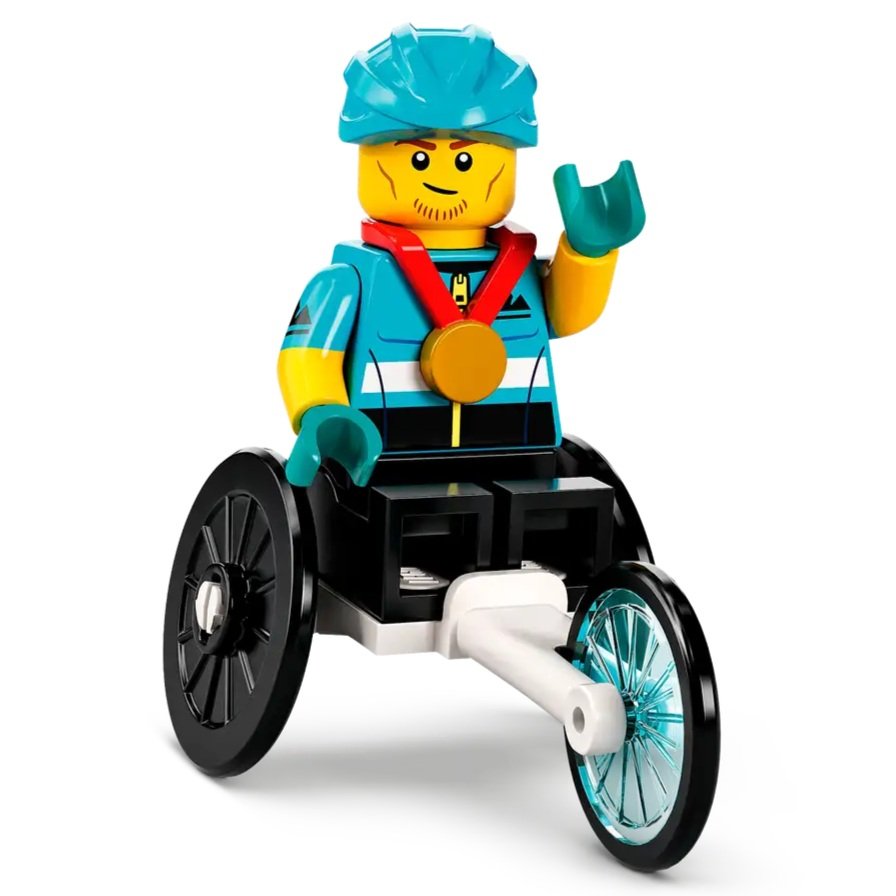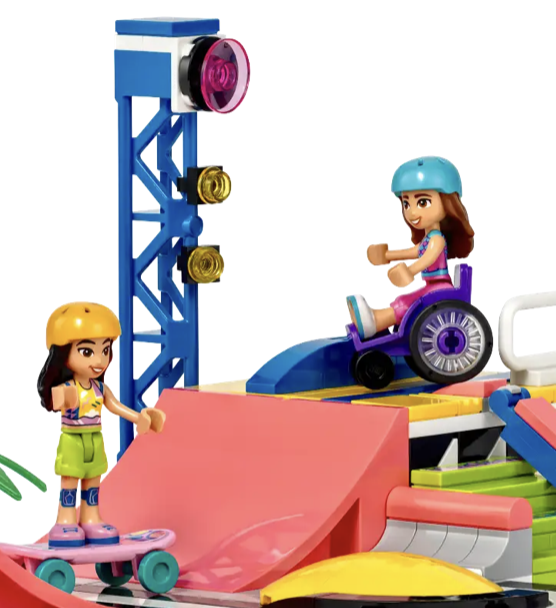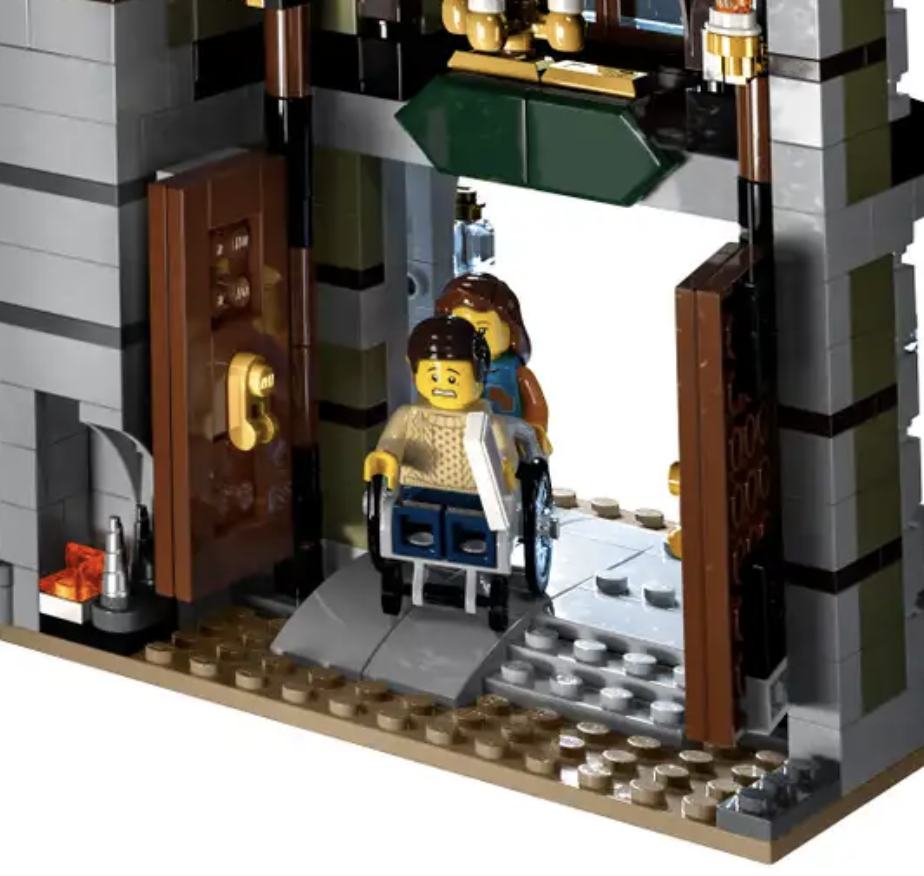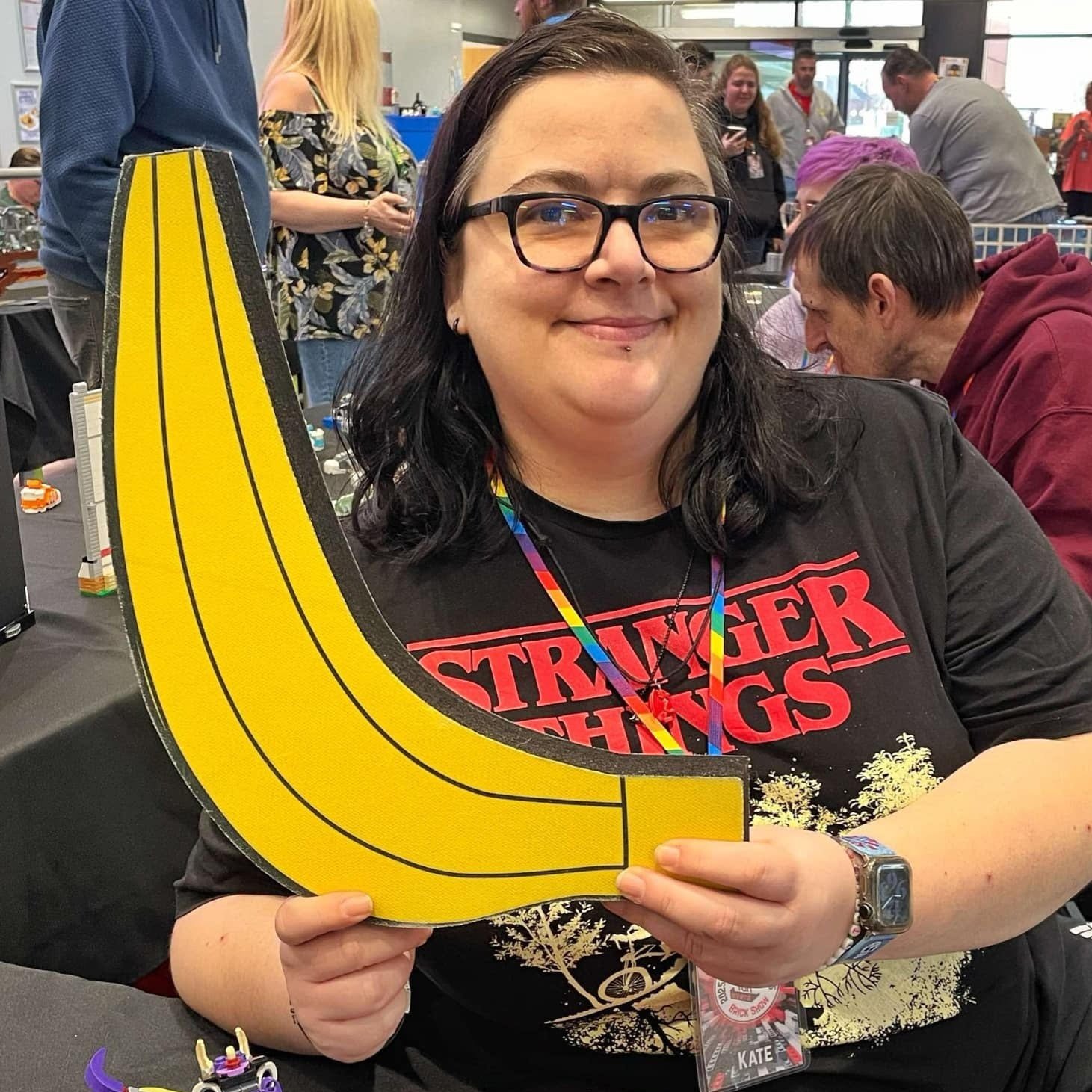Disability Representation in LEGO
/With the pubic availability of LEGO Braille Bricks, today we feature a guest article from Kat Sipe (drkatbuilds) about disability representation in LEGO.
As a Doctor of Physical Therapy (DPT), disability representation and adaptive equipment are part of my work every day. In my professional world, I have to help advocate for patients, recommend equipment, and educate individuals about mobility as ableism is still deeply ingrained in the medical world and beyond. Disability continues to be a stigma, but in recent years this is starting to change.
However, I am absolutely thrilled to see improving disability representation within the LEGO world! It is well documented in psychology literature that it is essential to see individuals represented in the world they interact with, including toys. This article will highlight all of the amazing steps forward The LEGO Group (TLG) has made, as well as suggest a few ideas for future development.
History of Disability Recognition
Over 1 billion individuals worldwide have disabilities and long-term conditions that affect their everyday lives, but legal protection for these individuals is still relatively new. In the USA, the disability movement started in the 1960s to reduce the stigma that they were not “defective.” The Americans with Disabilities Act (ADA) was signed on July 26, 1990. Protests started in San Francisco in the late 1970s which sparked assemblies nationwide.
The most famous event was the “Capitol Crawl” on March 13, 1990; over 1,000 people with various disabilities marched from the White House to the U.S. Capitol building to demand the passing of the ADA. This event highlighted the inaccessible architecture that affected disabled constituents every day. The ADA was signed a few months later, modeled after the Civil Rights Act of 1964, and consists of five sections (or titles).
The Start of Disability Representation in LEGO
While LEGO has been around for 90 years, it has taken a long time for them to represent disabilities in LEGO form in an accurate way. The first example of a wheelchair was a brick-built version in the 1975 set 363 Hospital, but with the constraints of available bricks, it is not a very realistic version. DUPLO introduced a molded wheelchair in 2011, but it would take another five years for a molded chair for minifigures to be created.
In 2015, Rebecca Atkinson from ToyLikeMe created a petition that gained over 20,000 signatures, calling for minifigures with disabilities to be included in the LEGO repertoire. Her work paid off, and set 60134 Fun in the Park introduced the first minifigure scale wheelchair in 2016.
Continued Representation
Since that first molded element, there has been significant improvement in accuracy and coverage of disabilities in a few of the LEGO theme lines (City, Friends, Ideas, and CMF).
Hearing Impaired Community
Set 60271 City Main Square introduced the first minifigure with a hearing aid. However, this set had a high price point which made accessibility more challenging. It was also disappointing to see how little this new piece was highlighted on the box art and in the highlight pictures.
Since then, the hearing aid design has been incorporated into other sets and different genders, although most are still found in unfortunately relatively high price point sets.
Vision Impaired Community
Set 60292 Town Center introduced a blind figure with a seeing-eye dog. While the dog and harness were new molds, the minifigure is generic and is simply a face with sunglasses. LEGO does not make a realistic white cane element that is commonly used by visually impaired individuals.
TLG has also been working on the implementation of Braille Bricks and instructions for blind and visually impaired individuals. This work has started with instructions that can be translated by a “Braille reader,” but will be continuing with bricks with Braille on them.
LEGO actually just announced the general availability of Braille Bricks in English and French with other languages coming soon. The bricks had been limited to community centers and school programs (provided free by LEGO) but are now available to everyone to explore. The sets are available for pre-order now from LEGO with shipping beginning Sept. 1, 2023. (If you want to know more about Braille Bricks, read this BrickNerd article all about them.)
Endocrine Dysfunction Community
Once again the Friends line is leading the pack with representation, and this time it’s with endocrine conditions! Set 41744 Sports Center introduces a figure with a continuous glucose monitor (CGM) and associated phone app! This is a great step forward with an estimated 2.4 million individuals using CGMs.
I would love to see more standard insulin pumps printed, although this may be more challenging as they are typically found under clothing.
Amputee/Limb Difference Community
While this is an area of disability that has technically been represented for decades with the pirate peg-leg, set 60347 Grocery Store released in 2022 included the first running blade prosthesis. While a running blade is technically not used often in everyday activity due to the fit and mechanics of it, seen the minifigure in the set was a great step forward in seeing more accurate prosthesis representation.
Earlier in the Friends theme, the lifestyle photos for set 41682 Heartlake City School featured a child with a limb difference. More recently, the new Friends character Autumn debuted with the January 2023 wave as the first minidoll/figure to have a molded limb difference (as opposed to just removing the figure’s hand). Her availability is significantly improved compared to other figures, as she will be available in sets at a variety of price points.
This representation was particularly meaningful because I have a community friend with a daughter with an arm limb difference. For her personally, representation like this changes the conversation from “What happened to your arm?” to “You look like Autumn!” which is a game changer for her and her kiddo!
Skin Difference Community
The first minifigure with Vitiligo was in set 21337 Table Football from the LEGO Ideas line. When talking to the designers about this decision at Fan Media Days 2022, the prominent choice behind the diverse skin tones in the set was to showcase diversity and inclusivity. However the price tag of $249.99 USD was incredibly steep for this unique figure. Since then, the set has gone on sale, and as of this article, it is $174.99 (which is still expensive, but a much better price for the 22 minifigures included).
The new DreamZzz line also has a character with vitiligo. Mateo has a lighter spot around his right eye that turns green when he is in the Dream World. While this was a bit harder to spot with the yellow tone minifigure, I consider it a win for representation (as not everyone with skin conditions like vitiligo have extensive pigmentation differences).
Mobility Device Community
As previously mentioned, the first molded minifigure wheelchair was introduced in 2016. That design has continued on with some slight modifications. However, it is not the most accurate design, as the minifigure cannot actually interact with the wheels based on the angle.
CMF Series 22 introduced the Wheelchair Racer which was a significant design improvement to the chair. This wheelchair design features a lower backrest without push handles. The camber (or the angle of the wheels to the chair) is more standard in a lot of wheelchairs used by disabled individuals as it improves shoulder mechanics for pushing. Because of this camber, the minifigure’s hands can actually grab onto the wheel! I would love to see this design modified to a more standard wheelchair in the future.
The Friends line also has several characters who use wheelchairs for mobility. However, with the minidoll leg limitations (they can’t bend), I don’t think we’ll see a more realistic chair design from the Friends line anytime soon, unfortunately.
Several sets have incorporated wheelchair accessibility in them. The first overtly featuring wheelchair accessibility was 10273 Haunted House, which has a ramp at the entrance for the wheelchair user to access the ride.
Since then, many City and Friends sets have incorporated wheelchair ramps and users into the sets, ranging from apartments to skate parks. The new City set 60365 Apartment Building also highlights a new power scooter, and the scooter can even access the building!
Room for Improvement
LEGO has shown a lot of improvement in the past few years with representation. However, there are still some areas for growth. Here are a few things I would love to see from future LEGO sets.
Mobility Devices
As a DPT, it is a huge bummer that mobility devices are not well represented! Crutches have been a minifigure accessory, but there are no walkers, powered mobility options, or realistic canes for figures to use. With an estimated 6.8 million Americans who use mobility aides, this is a big area to look at. While sets in the past few years have improved on this, I would love to see more options.
Price Points
Unfortunately, many of the specialized minifigures have been locked away behind high price point sets. While sites like BrickLink are an option for some, this is not feasible for everyone. It would be much better to start incorporating these figures into a variety of sets and polybags to improve their accessibility. The Friends line has done an excellent job of this, but it should be more commonplace in other themes as well.
Campaigns
LEGO has already shown that they are pros at campaigning for things they are working on. But this is an area that I have yet to see much of a feature on, but it should be! It would be amazing to see individuals (both younger and older) given the spotlight to talk about their disabilities and how seeing themselves in LEGO form affected them.
Paving The Way
In the ever-evolving landscape of inclusivity and diversity, The LEGO Group’s strides in enhancing disability representation are commendable—but also a long time coming and, more importantly, crucial. As a Doctor of Physical Therapy, I witness firsthand the impact of disability representation and creating a more inclusive world of play. Seeing oneself reflected in the toys a child (or adult) plays with is a profoundly resonant activity. So as we celebrate the progress made, let us continue to support and encourage the evolution of disability representation in the vibrant world of LEGO. Together, we can pave a more accessible way so everyone can find a piece of themselves in the stories they build.
Best of BrickNerd - Article originally published August 24, 2023.
What improvements in the area of disability representation would you like LEGO to make? Let us know in the comments below.
Do you want to help BrickNerd continue publishing articles like this one? Become a top patron like Charlie Stephens, Marc & Liz Puleo, Paige Mueller, Rob Klingberg from Brickstuff, John & Joshua Hanlon from Beyond the Brick, Megan Lum, Andy Price, John A., Lukas Kurth from StoneWars, Wayne Tyler, LeAnna Taylor, Monica Innis, and Dan Church to show your support, get early access, exclusive swag and more.




